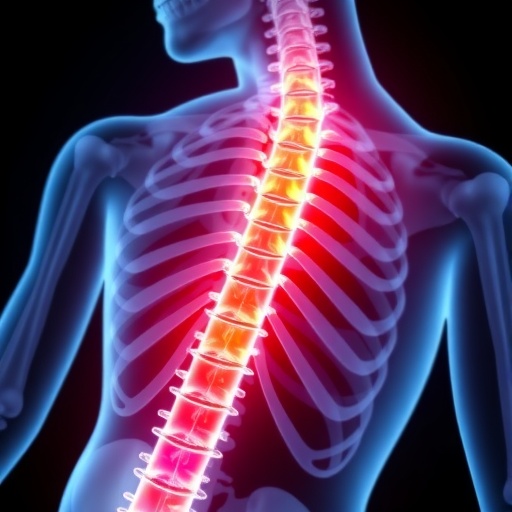Synthetic coronavirus genes from NIST can be used to measure and improve the sensitivity of diagnostic tests for COVID-19

Credit: N. Hanacek/NIST
Researchers at the National Institute of Standards and Technology (NIST) have produced synthetic gene fragments from SARS-CoV-2, the virus that causes COVID-19. This material, which is non-infectious and safe to handle, can help manufacturers produce more accurate and reliable diagnostic tests for the disease.
Tests for an active infection — as opposed to antibody tests that indicate a past infection — work by detecting the virus’s genes on a nasal swab. But a negative result does not necessarily mean that a person is disease-free. It could be that the amount of virus is too low for the test to detect, which is especially possible during the first days after catching the virus.
“Having better data on test sensitivity will help us understand how often tests for COVID-19 produce a negative result for people that are actually infected,” said NIST research scientist Megan Cleveland.
To help with this, Cleveland and her colleagues at NIST have produced synthetic fragments of the virus’s genes, which are written in RNA, a molecule that encodes information much like DNA.
Synthesizing RNA is not new or groundbreaking. What makes this material notable is that NIST scientists have measured very carefully how many fragments are in each vial they ship.
Using this material, researchers can measure sensitivity by running tests against known quantities of viral RNA. They can also use it to develop more sensitive tests or new types of tests that are faster or easier to administer.
The SARS-CoV-2 genome is approximately 30,000 base pairs long. The synthetic RNA fragments from NIST are each about 4,000 base pairs long, as shown here:
NIST researchers chose to synthesize these particular fragments because they contain the RNA sequences targeted by a large number of diagnostic tests, including those designed by the CDC.
These RNA fragments are distributed by NIST in small vials packed in dry ice, along with a data sheet that lists the concentration of the fragments in the solution. The solution contains roughly 1 million copies per microliter, or one millionth of a liter (one drop of water contains about 20 microliters). NIST measured this concentration multiple times using a technique called digital PCR, or dPCR, which counts the number of individual DNA fragments in a volume of liquid.
Researchers can use the RNA fragments from NIST to measure the sensitivity of coronavirus tests. To do that, they would use the concentrated solution from NIST to create a series of increasingly diluted samples. They would then run each of those dilutions through their test to find the lowest concentration of RNA fragments that still produces a positive result.
In addition to measuring sensitivity, researchers might also use the synthetic RNA from NIST to develop more sensitive tests or new kinds of tests. For instance, recent research has shown that it might be possible to track the spread of COVID-19 in a city by testing municipal wastewater. The material from NIST might help researchers ensure that they can reliably detect very low concentrations of virus in millions of gallons of wastewater.
NIST is releasing this synthetic RNA as a “research grade test material,” though NIST scientists are planning to further develop it into the type of standard reference material (SRM) that NIST is known for. NIST is providing this material at no cost to researchers, test manufacturers and testing laboratories. Technical information and instructions for requesting the material are available on the NIST website.
Genetic supply companies are also synthesizing portions of the virus’s RNA, but what sets the NIST material apart is the amount of data that comes with it. Detailed information on how NIST scientists synthesized the fragments and measured their concentration is available in an online Guidance Sheet. Additional information, including raw data and statistical analyses of the concentration measurements, is available on a GitHub site. NIST is providing this data as part of its mission, as the nation’s measurement laboratory, to advance measurement science.
“Measuring sensitivity is an important part of test development,” said Peter Vallone, the NIST research scientist who oversaw development of the new material. “And we want to make sure that people have the materials and information they need to make the most accurate measurements possible.”
###
Media Contact
Rich Press
[email protected]
Original Source
https:/





